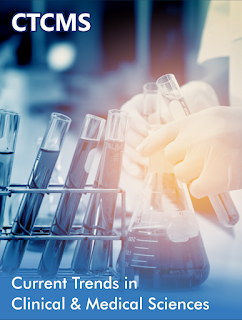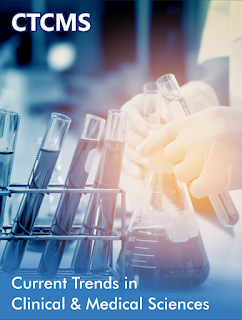Iris Publishers - Current Trends in Clinical & Medical Sciences (CTCMS)
Pharmacoeconomic Evaluation of Novel Oral Anticoagulants in Patients with Cardiovascular Diseases: A Systematic Review
Authored by Ahmed Ibrahim Nouri
Introduction
For decades, the oral
anticoagulant warfarin remained the gold standard of medical management for
many cardiovascular diseases and main pharmacological agents for the
prophylaxis of venous thromboembolism [1]. Among these cardiovascular patients,
the vitamin K antagonists are especially beneficial to patients with venous
thromboembolism and for the prevention of stroke. In terms of clinical
consideration, warfarin displays several limitations and disadvantages. The
narrow therapeutic window and vast drugdrug and drug-food interactions
properties of warfarin render it clinically difficult to use [2]. Precise dose
adjustment and frequent dose monitoring are of utmost importance because
inappropriate dose can lead to many adverse clinical events. Warfarin over-dose
will increase the risk of serious bleeding while under-dose will not produce
the therapeutic outcomes desired, for example stroke prevention [3].
Novel oral anticoagulants (NOACs)
are becoming more important in clinical uses due to the limitations of warfarin
mentioned above. NOACs can be divided into direct factor Xa inhibitors
(rivaroxaban, apixaban and edoxaban) and direct thrombin inhibitors
(dabigatran). In terms of bleeding risk, NOACs display a significantly lower
risk of intracranial and intracerebral bleeding than warfarin [4]. NOACs
display evidence that they are at least as effective as warfarin if not
superior to warfarin in the clinical treatment of patients with systemic
embolism and as a prophylaxis for stroke in atrial fibrillation patients [5-6].
Even though NOACs show a superior
performance in clinical uses compared to warfarin, but the main drawback on
prescribing NOACs to patients instead of warfarin is due to the high daily
costs. The rising clinical importance of NOACs, as well as their higher cost,
impose a question on the pharmacoeconomic performance of the NOACs. There are
numerous studies done in many countries to evaluate the pharmacoeconomic
profile of the NOACs.
The aim of this systematic review
is to evaluate the pharmacoeconomic performance of four novel oral
anticoagulants, rivaroxaban, apixaban, edoxaban and dabigatran usage in
patients with cardiovascular diseases (deep vein thrombosis, pulmonary
embolism, atrial fibrillation and stroke).
Methodology
A search was conducted in Google
Scholar, Embase, Cochrane Library, Medline, CINAHL and Science Direct using
search algorithms to identify relevant pharmacoeconomic publications of novel
oral anticoagulants in patients with cardiovascular diseases. Processes
throughout systematic review were carried out using Preferred Reporting Items
for Systematic Reviews and Meta- Analysis (PRISMA) statement. The search
identified publications with the keywords pharmacoeconomic, cost-effectiveness,
novel oral anticoagulants, dabigatran, rivaroxaban, apixaban, edoxaban,
cardiovascular diseases, stroke, atrial fibrillation, deep vein thrombosis or
pulmonary embolism. Both cost studies and economic evaluation of novel oral
anticoagulants were considered.
While cost studies estimate
expenses associated with a particular treatment for cardiovascular diseases,
economic evaluations assess both health costs and benefits associated with a
drug against its comparator(s). Economic evaluations usually include
cost-effectiveness analyses, cost-utility analyses, and cost-benefit analyses
depending on how health benefits [natural units, quality-adjusted-life-years
(QALYs)] and monetary terms are measured. QALYs incorporated both morbidity (as
the quality of life) and mortality. Cost-effectiveness analyses looks at a
single quantified effectiveness measure of the cost per unit. There are many
variations in cost-effectiveness analyses that can be considered; cost
consequence and cost-minimization analyses, with comparing cost outcomes due to
health benefits. Economic evaluation in health care consider the resources
consumed by patients, productivity losses, health sector and other sectors as
well. A treatment is usually considered cost-effective if the incremental
cost-effectiveness ratio (ICER) is below the commonly used threshold for the
given country. Various threshold are available such as $50,000 per QALY in the
United States and $20,000-$100,000 per QALY in Canada.
The title and/or abstract of
articles published between 2008 and 2018 pertaining to novel oral
anticoagulants were searched for the keywords. “Grey” literature (ie, material
that can be referenced, but is not published in peer-reviewed, indexed medical
journals) was not examined and not included in this review. From the review
questions, the author concluded that the question is a therapy question. Hence,
the best evidence would be a randomized controlled trial, cohort study, and
case-control. Abstracts were included when all of the following were true:
cost-effectiveness of different novel oral anticoagulants on patients with
cardiovascular diseases and published from 2008 to 2018. Articles published in
English language only were accepted; those that did not meet the pre-stated
criteria were excluded. Different types of novel oral anticoagulants
(dabigatran, rivaroxaban, apixaban and edoxaban) used in patients with
cardiovascular diseases were included in this review. Articles that have not
mentioned novel oral anticoagulants were excluded. Patients with cardiovascular
diseases (stroke, deep vein thrombosis, pulmonary embolism and atrial
fibrillation); any gender; any age and any severity of cardiovascular diseases
were included in this review. Populations were not restricted to one country or
place. All papers around the world will be examined and reviewed.
For data extraction, data
extracted from included studies using data extraction from guided by
standardized extraction data tool by Cochrane Collaboration. The extracted data
assured to match with the review question and fulfill the review objectives. A
table was used to present details of the characteristic of included studies,
such as author, country, year of study; interventions, sample and study design.
Data on study design, inputs, results and authors’ conclusions were extracted
To read more about this article: https://irispublishers.com/ctcms/fulltext/pharmacoeconomic-evaluation-of-novel-oral-anticoagulants-in-patients.ID.000539.php
Indexing List of Iris Publishers: https://medium.com/@irispublishers/what-is-the-indexing-list-of-iris-publishers-4ace353e4eee
Iris
publishers google scholar citations: https://scholar.google.co.in/scholar?hl=en&as_sdt=0%2C5&q=irispublishers&btnG=



Comments
Post a Comment